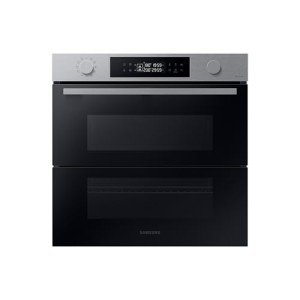The Rise of Built-In Ovens: A Seamless Approach to Modern Cooking
In modern kitchen areas, where design aesthetic appeals mix seamlessly with functionality, one home appliance sticks out as a real game changer: the built-in oven. As house owners and chefs alike continue to look for innovative services that boost their cooking experience, built-in ovens have ended up being increasingly popular. This post explores the benefits, considerations, and trends surrounding built-in ovens, highlighting why they are an important feature in modern cooking areas.
What is a Built-In Oven?
A built-in oven is a kitchen area device designed to be integrated into the cabinetry of a kitchen rather than standing alone. Unlike conventional freestanding ovens, which can be moved and placed anywhere, built-in ovens can be found in numerous designs and sizes to fit particularly within designated spaces. Offered in single or double setups, these ovens offer a streamlined look that matches modern kitchen styles.
Advantages of Built-In Ovens
1. Space-Saving Design
One of the most enticing benefits of built-in ovens is their space-saving style. By integrating the oven into cabinetry, you can maximize important counter and floor space. This is particularly useful in smaller sized kitchens, where taking full advantage of space is essential. Built-in ovens can be set up at eye level, making them more available and decreasing the requirement to bend down.
2. Visual Appeal
Built-in ovens add to a sleek and cohesive kitchen design. Readily available in different finishes-- such as stainless-steel, black, white, and custom-made cabinets-- they can blend perfectly into the total design. This aesthetic appeal enhances the cooking area's visual consistency and elevates the space, producing a contemporary and sophisticated environment.
3. Boosted Functionality
Many built-in ovens come geared up with advanced cooking innovations, such as convection cooking, steam ovens, and wise functions. These enhancements permit versatile cooking alternatives, making it much easier to attain professional-level results at home. Smart built-in ovens can even link to Wi-Fi, enabling users to control the oven remotely, receive notices, and gain access to a variety of cooking programs and dishes.
4. Enhanced Ventilation
Since built-in ovens can be integrated with kitchen hoods and ventilation systems, they can help maintain much better air quality and decrease cooking odors. This is particularly significant for those who love to cook with aromatic spices and ingredients, as an effective ventilation system can keep the cooking area comfortable and welcoming.
5. Personalization Options
Built-in ovens use a vast array of modification choices to match individual cooking styles and requirements. From professional-grade home appliances with several cooking modes to compact styles for smaller sized kitchens, property owners can pick the oven that fits their particular requirements. Numerous producers also offer adjustable front panels, enabling you to match the oven's look to your kitchen cabinetry for a really merged appearance.
Factors to consider When Choosing a Built-In Oven
While built-in ovens have numerous benefits, there are essential considerations to keep in mind before buying:
1. Cost

Built-in ovens normally feature a greater cost tag than their freestanding equivalents due to their style and installation requirements. It's crucial to aspect in both the cost of the oven and any additional expenses connected to kitchen cabinetry modifications or setup.
2. Installation Requirements
Setting up a built-in oven frequently requires expert assistance, particularly if you require to customize existing kitchen cabinetry. Guarantee that you consider any costs related to setup, consisting of labor and prospective cabinets adjustments.
3. Size and Dimensions
Before buying a built-in oven, measure the designated space accurately to make sure a proper fit. Built-in ovens can be found in different sizes and configurations, so choosing one that lines up with your requirements and cooking area style is essential.
4. built in oven to buy and Usage
Consider your cooking habits and needs when selecting a built-in oven. If you often host big gatherings, a double oven might be more useful. On the other hand, if you have a compact cooking area, a single-wall oven may suffice.
Patterns in Built-In Ovens
The cooking area home appliance market is constantly progressing, and built-in ovens are not exempt from emerging trends. Some present trends include:
Smart Technology Integration: With the rise of smart home technology, built-in ovens now often include connection choices. This enables users to monitor cooking progress and change settings via mobile apps.
Energy Efficiency: As sustainability becomes a top priority, many makers are buying energy-efficient built-in ovens that decrease energy consumption while maintaining performance.
Multi-functional Designs: Built-in ovens now use functions such as air frying, slow cooking, and steaming, supplying versatility that meets a vast array of cooking methods.
Conclusion
Built-in ovens unquestionably represent an ideal mix of style, function, and convenience in today's cooking areas. As more property owners select this contemporary service, the focus shifts to developing a cooking space that is as visually pleasing as it is useful. Whether you are building a new home or renovating your cooking area, considering a built-in oven could raise your culinary experience and change your cooking area into a stylish and practical haven. With a variety of options offered and ongoing innovations in technology, built-in ovens stay a standout choice for both novice cooks and culinary enthusiasts alike.
